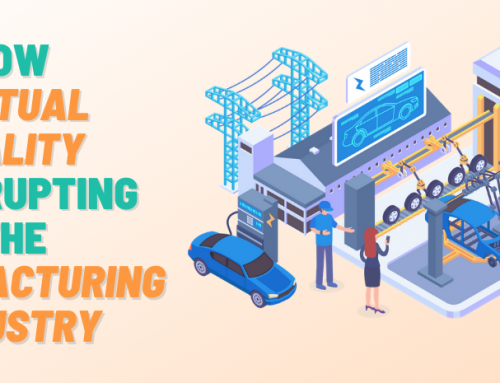
Today in order to prepare this article I was researching for different innovation frameworks which explain why some technologies and enterprise take off and some others do not.
The inspiring quote of Mahatma Gandhi seemed to be also appropriate, ‘‘First they ignore you, then they laugh at you, then they fight you, then you win.’’
Although by this quote legendary Gandhi meant how to spread social justice and how to defeat violence with peaceful, civil disobedience, his approach can be applied in disseminating new technology.
I remember once in a vivid conversation how a dear friend stated, ‘‘No matter what you do, every 5th person you encounter will be negative about it.’’ She was talking about serious impact that Laggards leave according to Everett Rogers’ theory on the adoption of innovation. Yes, when a new product, service or project is launched 16% of people called Laggards remain negative about it, sometimes even without testing it a priori.
For innovation to take off, it is incredibly important that Innovators (2.5% of total population who first adopt the innovation) give their feedback, recognize it and approve it. Innovators are close to top business and scientific circles, have great social capital and finance so they are strongly inclined to test quickly new technologies as they appear.
However, it is because of Early Adopters who comprise 13.5% of total population that the innovation can spread to the rest of the population (in other words Early Majority and Late Majority).
Those groups of adopters, each respectively consist of 34%, would be less inclined to adopt tech innovation when it is completely fresh and praised by Innovators. Once, Early Adopters actually recommend, use and live with such innovation, Early Majority and Late Majority start to enquire and wish to have the product or service that is slowly but surely becoming socially acceptable.
When it comes to implementing Virtual Reality to a greater extent in your business and with a greater impact, follow these three steps:
1. PAY ATTENTION TO KEY METRICS OF VR BUSINESS SUCCESS
In the beginning when we start adopting new technology, we may make a heavy mistake and perceive every metric and traction of success as relevant for the growth of our business.
Several authors including Eric Ries and Erick Schonfeld have been unveiling that actually some metrics are vanity metrics because they boost founder’s ego rather than help them build the better software that customers would want.
Of course, there is an antidote for vanity metrics so that we do not fall prey to them. VC Fred Wilson noticed in both portfolio companies and the startups he was working with 30/10/10 rule. This means that 30 percent of downloads or registered users are active once a month, 10 percent are active once a day, and 10 percent of the daily users will be the maximum number of concurrent users.
To better understand and implement actionable metrics, read the elaborate guide of Eric Ries who was interviewed by Tim Ferriss.
Just to tease you up a bit, the tips for getting the more actionable metrics are: split-tests, per-customer metrics, funnel metrics and cohort analysis, keyword SEM/SEO metrics, but you will get more details as you go into this text vanity metrics vs actionable metrics.
In terms of VR, budgeting, creativity as well as the relevance for clients come hand in hand. So once again, actionable metrics count to an enormous extent.
nDrems’ CEO Patrick O’Luanaigh revealed key metrics in creating VR games that helped him and his team a lot.
O’Luanaigh warns that assumptions are very dangerous for VR and gaming teams because you do not want to create a lot of intense experience and content that takes time to generate only to learn that nobody wants to use it. Gaze data and checking frame rates are very actionable metrics that help innovative teams harness their potential and navigate through steep corridors of short time-to-market and dealing with the available customer feedback.
In Patrick’s own words, ‘‘Analytics can be used to determine what should be prioritized using heat maps generated from gaze data. It gives the content creators an idea of what areas of the game are looked at most, and thus what should be given the most attention.
Many people in VR are concerned by performance, which means that hitting a consistent frame rate in every scenario and at every possible location in your environment is vital.
It would be impossible for a tester to work through the whole game and gaze at all the different areas and note down frame-rates, so we set up an automated profiling service that plays through the game and records the frame metrics such as CPU time, GPU time, draw calls, and other engine specifics. These are all fed back into an internal page that our content creators use to decide how they will approach fixing any performance issues in their levels.’’
If VR is used for advertising purposes and better understanding clients’ behaviour, metrics such as where the gaze goes, whether the user saw the ad and what new kinds of testing the app will exist start to be very relevant.
2. IMPLEMENT HYBRID THINKING
Gartner defines the concept of hybrid thinking as an organic discipline for ‘‘taking on wicked problems by iteratively implementing transformative, innovative, and strategic change via the co-creative exploration of human-centered experiences that are culturally meaningful, technically feasible, and economically sustainable.’’
Ray Kurzweil, Co-Founder and Chancellor of Singularity University unveils the model of hybrid thinking, ‘‘a future where the lines between human intelligence and artificial intelligence cease to have meaning.’’ Kurzwell, the author of The Age of Spirituality and The Singularity is Near, leaves us with strong arguments that one day we would be incapable of distinguishing between our own conclusions and the conclusions of a connected algorithm.
Yes, it will take more time for current innovative technologies to get disseminated and as Kurzwell agrees we can be several decades away from the age of singularity, that humans will be hybrids by 2030 and many authors agree with certainty on human’s road towards Super Intelligence.
The more we study hybrid thinking as well as philosophers and practitioners who deal with it; the more we engage into the futuristic views of knowledgeable experts with a proven track record, the more equipped we will be with the right tools and strategies to emulate the process of human brain and computers.
Consequently, we will better synergize ‘‘the operating systems’’ in our very brain, body, senses and technology we are using. VR and AR are so immersive and engaging that we got to be truly ready to understand interactions of human and tech environment.
For example, not so far away, fans of sports will not rely exclusively on live-blogging and commentators’ views. The sparks of spectacular will spice up sport coverage thanks to VR and similar gamified experiences where you are really inside the content and you live through it with your favourite sport heroes, and very likely, sport villains.
3. INVEST IN LIFE-LONG EDUCATION
Since I have been teaching at university for four years and I have been fully engaged into learning for the last 23 year of my life, I am quite confident that I can tell hype from real trends. Many resources tackle the implications of digital transformation on global business, but The World Economic Forum’s series on The Fourth Industrial Revolution are certainly worth your time.
During one of relaxed, Saturday-evening conversations with a dear internet marketing colleague Ivan Bildi, we have reached the conclusion that although the spaciousness of the internet leaves us with unprecedented opportunities to learn, unless we truly focus on mastering one area of business, marketing or technical competence, it may get overwhelming for us and we may stuck in the middle.
One of the rules for success that was valid throughout history from ancient times all the way through the giants of innovation in the 20th and 21st century is that incredibly successful people never stop learning, while curiosity and grasping new knowledge is vital for them to thrive even in older age.
Moreover, successful people continue to excel at implementing what they know, which affects other areas of their lives. In case they obtained specific, carefully organized knowledge as Andrew Carnegie, Napoleon Hill and many other magnates advocated, they will not attain full financial liberty.
Therefore, to all my students, friends, colleagues, but also myself, I always recommend getting into the habit of learning their entire life.
In terms of VR content, on MOOC platforms like these ones there are thousands of courses for programming, design, business and data analytics which can help you polish your knowledge regardless at what stage your career is.
In addition to these resources, there are more specific ones which are relevant for VR. For instance, Layout provides a VR course and community which will perfectly suit you if you base your work around projects. Coursera and edX courses on gamification, running global business and operations, as well as executing on technology-enabled platforms will unlock your potential further.
With so many new ways to engage and convene people, data and assets, new knowledge will challenge you and yet help you skyrocket your career once you grasp it fully.
Experienced developers recommend picking up a game engine like Unity (if you are a beginner) Unreal Engine 4 (if you are more experienced with graphics) or CryEngine and mastering completely how to use it.
Now that all these engines are well integrated with all crucial VR devices such as Google Daydream and Cardboard, HTC Vive, Oculus Rift, HoloLens, PlayStation VR, the need for amazing VR content is soaring.
Yes, in upcoming years it may be necessary to further develop VR hardware and head-mounted displays but experts in the VR field sense the need for VR content that users want to consume again and again.
As a result, plenty of engaging VR content requires new storyboards, interesting plots in games, integration and tracking of marketing analytics, as well as enhanced graphic solutions that does not leave the VR user dizzy and with a headache.


